The tops or feathers of garlic are traditionally tied in knots to get larger and higher-quality heads (bulbs). They will make good seed, and the harvest will be stored longer. This method works by gradually drying the damaged leaves, as a result, most of the nutrients are sent to the bulb.
When should garlic tops be tied
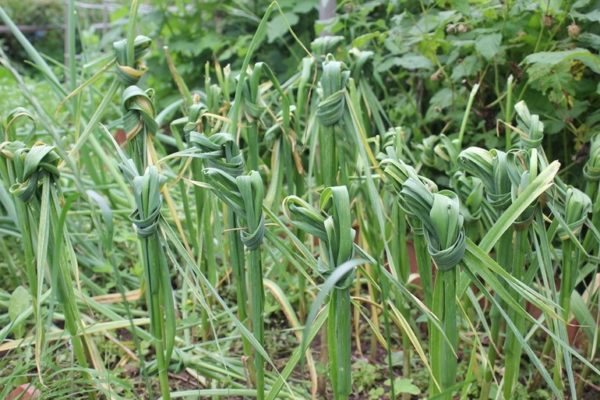 It is customary to tie a feather at the stage of active ripening of the bulb. Namely, a few (3-5) days before the harvest. For winter crops, this is approximately mid-July. For spring the timing varies greatly, depending on the variety, the ripening process can end in July and October. Weather conditions are also worth considering. Impending rains, droughts or frosts are the reason for an early harvest.
It is customary to tie a feather at the stage of active ripening of the bulb. Namely, a few (3-5) days before the harvest. For winter crops, this is approximately mid-July. For spring the timing varies greatly, depending on the variety, the ripening process can end in July and October. Weather conditions are also worth considering. Impending rains, droughts or frosts are the reason for an early harvest.
The ripening time of the head can be determined by the type of pen:
- it tends to land;
- getting tougher;
- its tips turn yellow.
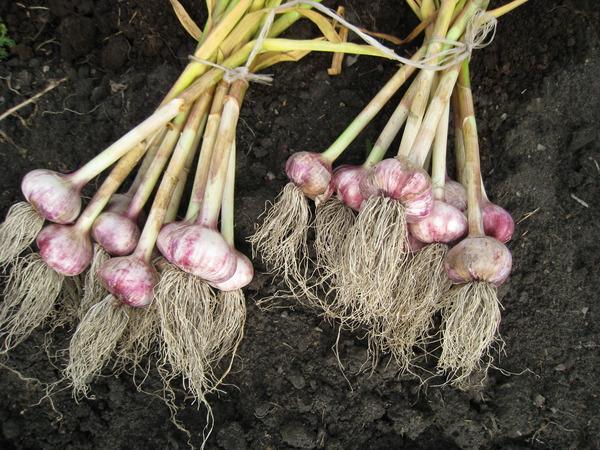 You may be interested in:
You may be interested in:For more confidence, you can dig one head. If the peel easily detaches from the cloves, then the garlic has ripened. The heads must be dug up soon so that they do not have time to give nutrients to the ground.
How to tie tops
The garlic feathers are knotted or braided in a tight braid so that it does not untangle. To protect your hands from cuts, it is worth using gloves. Flower arrows can complicate the process. If they have not been cut before, then you should do it now. It is important to cut or gently break off, but do not tear off the flower stem, so as not to damage the bulb.
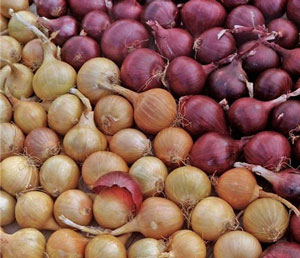 You may be interested in:
You may be interested in:Harvesting is best done in the morning or evening. This is done so that in the process of drying the garlic is not exposed to harmful sunlight.
To get beautiful, large heads of garlic, gardeners with experience recommend using a method of tying feathers. Manipulations should be carried out several days before the harvest. Depending on the variety, it can be mid-summer or fall.

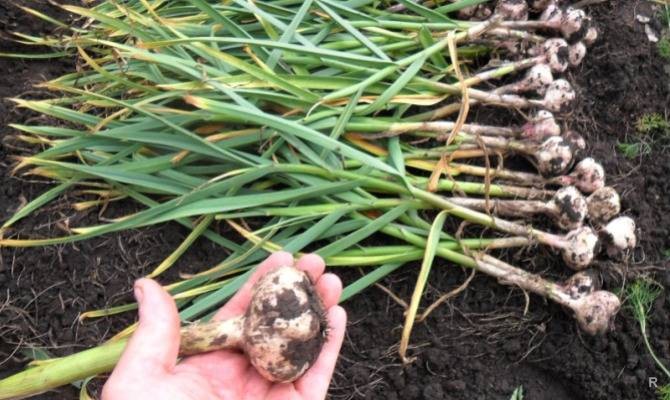
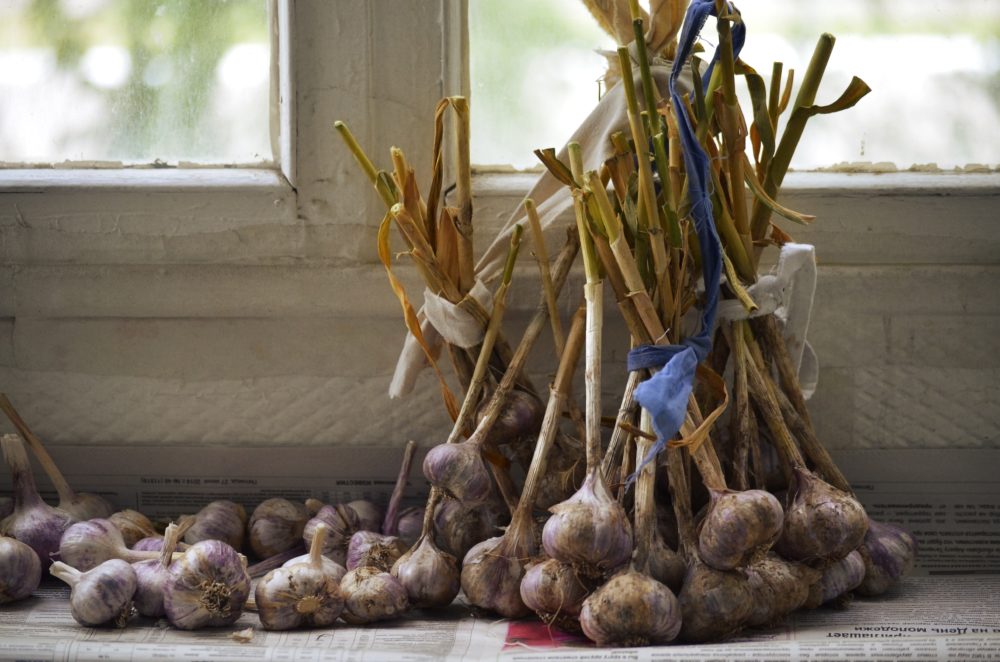
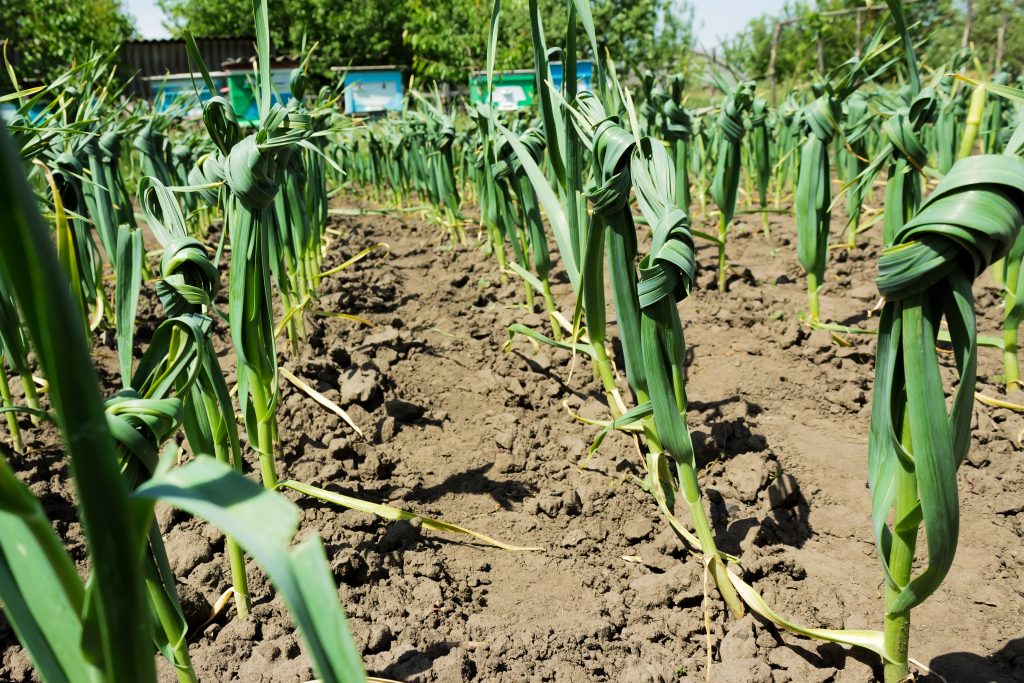
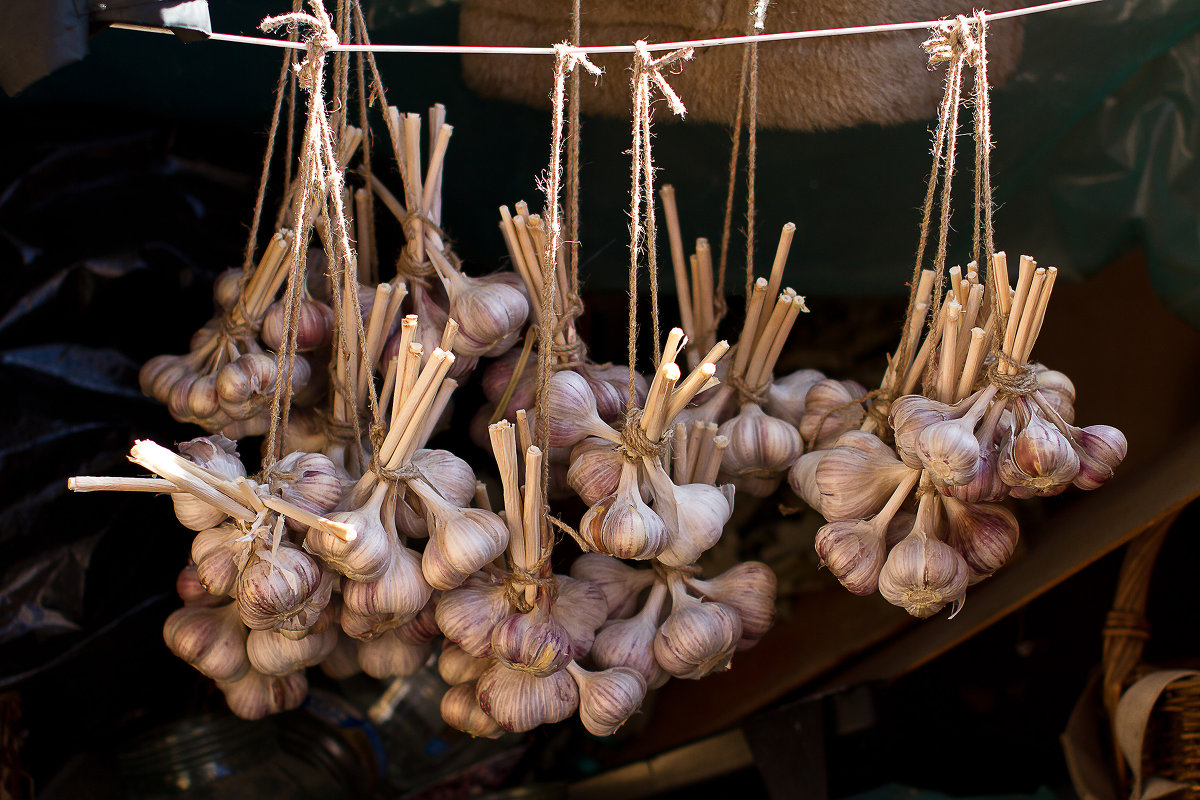 Methods for storing garlic in the winter at home
Methods for storing garlic in the winter at home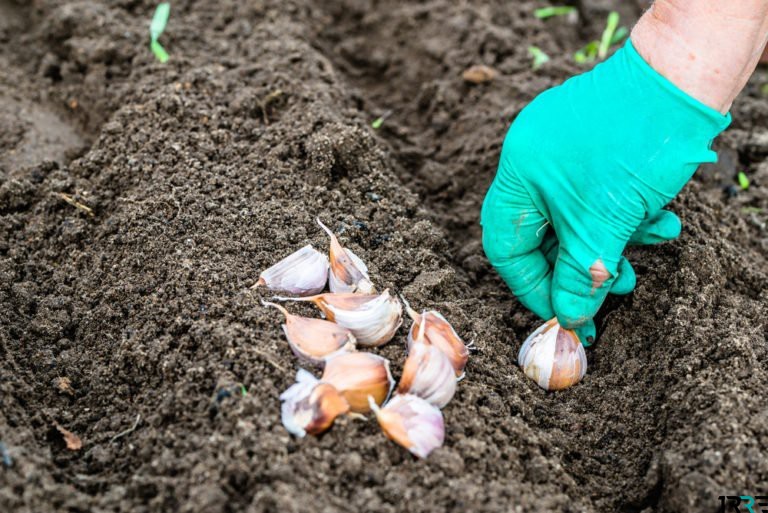 Processing garlic before planting in the winter: soaking garlic and tillage
Processing garlic before planting in the winter: soaking garlic and tillage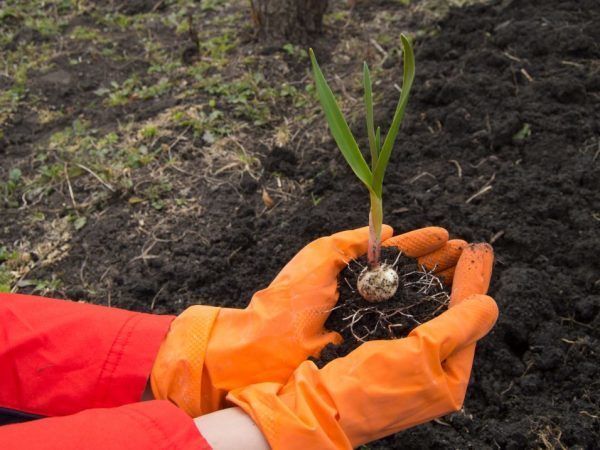 Fertilizers when planting garlic in the fall: how to fertilize the soil
Fertilizers when planting garlic in the fall: how to fertilize the soil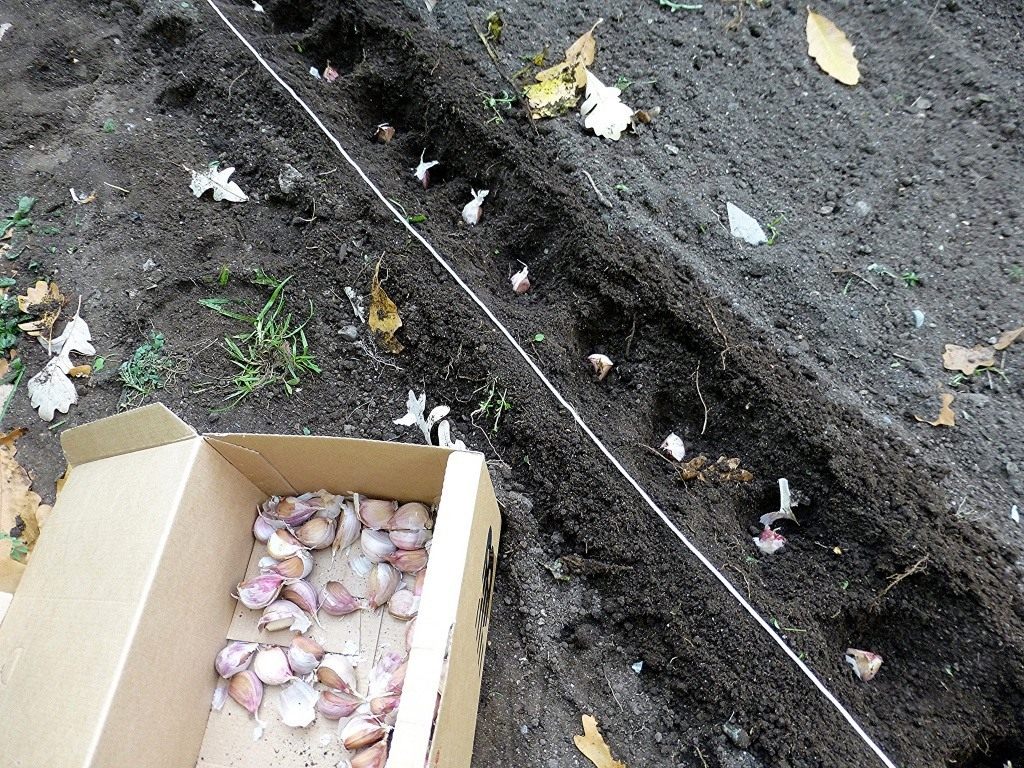 Features planting garlic in the winter in the fall
Features planting garlic in the winter in the fall